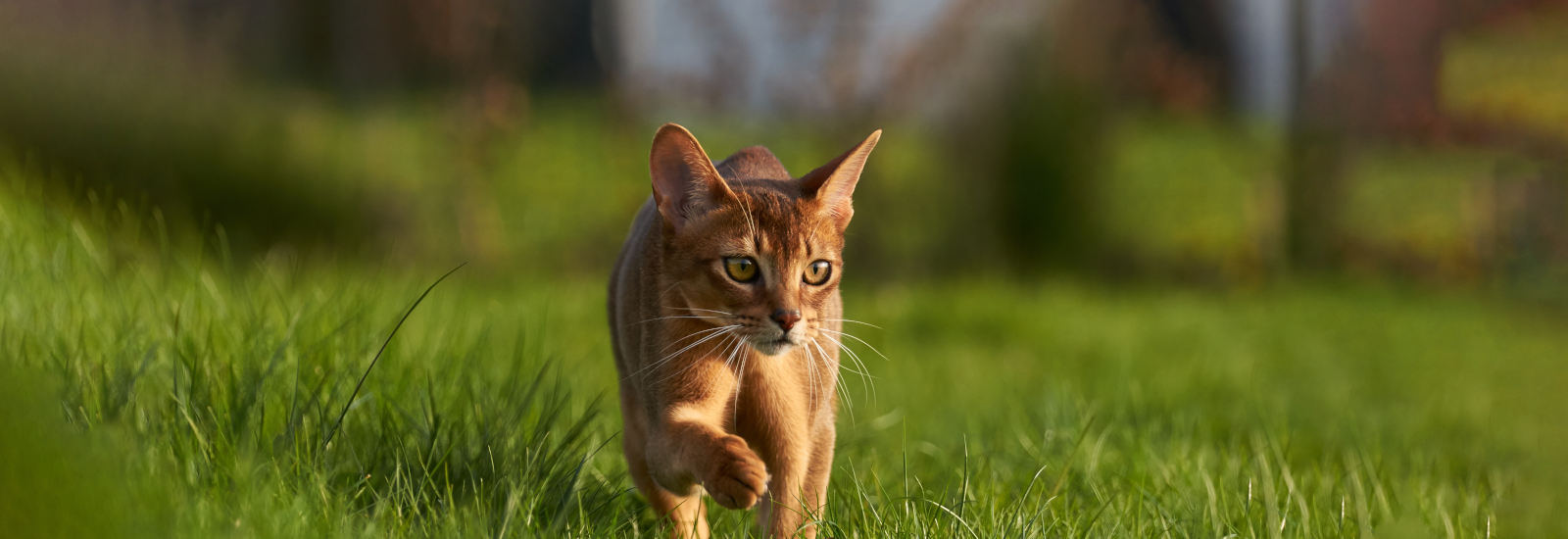The Abyssinian cat
The Abyssinian cat is very elegant and has a fascinating coat: each individual hair is banded with multiple colours, giving it’s fur a unique sheen. However, this playful breed of cat is not just outwardly appealing.
Steckbrief Abessinier
- Size medium
- Weight female: 3 to 4 kg, male: 4 to 5 kg
- Origin Southeast Asia
- Build sleek, muscular
- Length of fur short
- Colour of fur reddish-brown, blue-grey, copper, beige, silvery white
- Grooming minimal
- Behaviour active, playful
- Character even-tempered, people-oriented
Appearance and character of Abyssinian cats
Some breeds of cats are calm and fond of being cuddled, while others are slender, elegant and highly active. The Abyssinian cat clearly belongs to the second group. It prowls through its home like a cougar, uses its strong muscles to leap up onto a shelf and then preens itself like a diva looking down from its cat tree. Abyssinian cats are characterised by a lean, muscular build, long slender legs and a long tail. They have large, almond-shaped eyes and strikingly large ears, often with a tuft of hair on the tip.
The fur of an Abyssinian cat is short, fine and dense. The special features of its fur can only be seen on closer inspection: each individual hair has two or three bands of colour. This phenomenon is known as ticking. It forms during the first year of the cat’s life and is often not fully developed until it is two years old. This is when the special shine appears as a result of the colour bands, whereby dark-tipped hairs tend to dominate. The breed standard specifies reddish brown, blue-grey, copper red, beige and silvery white as the basic colour of an Abyssinian cat.
Despite the refined appearance of this breed of cat, it is by no means always well-mannered, reserved, and not particularly chatty. It can also be hot-tempered at times, chasing wildly around the home, scampering up and down the cat tree and enjoying playing energetically with cat fishing rods, toy mice and squeaky balls. As soon as an Abyssinian cat has had the chance to work off its energy, it will have no objection to a cuddling session with its owner. But as with many other breeds of cat, it will be the one who decides when and how long this will last.
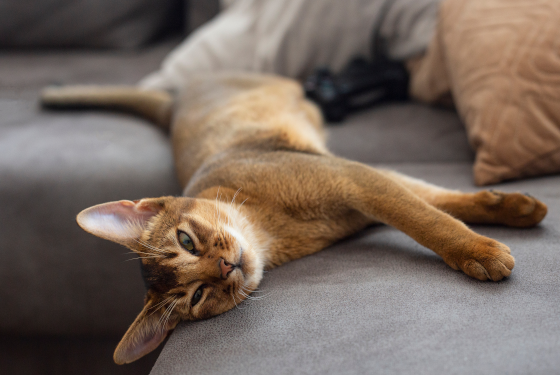
Keeping and caring for an Abyssinian cat
The Abyssinian is one of the more active cat breeds. Although they also sleep for half the day, as soon as they are awake they really enjoy plenty of action and activity. Ideally, they will have another cat to play with. If, however, it is the only cat in the household or is not allowed outdoors, it is important to avoid regularly leaving it alone for long periods of time and to make sure it has plenty of things to keep it occupied. A large cat tree with lots of opportunities for climbing is perfect for this, as are cat toys, a homemade activity fun board and, of course, personal contact.
Because of their sociable nature, Abyssinian cats are very happy living in a family with children and other pets. The Abyssinian is usually kept as an indoor cat. It will have no problem not being let outdoors if it is kept occupied in a species-appropriate way.
Nutrition
Whether it’s a kitten, an adult cat or a senior – the food for an Abyssinian cat should always be of high quality and tailored to its age. Cats are carnivores by nature, so cat food should always contain a high proportion of meaty ingredients. Sugar, flavour enhancers and artificial colourings and preservatives do not belong in the food.
animonda has the ideal food for every stage of your cat’s life. You can choose between kitten, adult and senior cat food. The products are specially formulated to meet the specific nutritional requirements of the different life stages of cats. This provides the best foundation for your pet to enjoy a long and healthy life.
Abyssinian cat: health
The Abyssinian has an average life expectancy, usually living for around 12 to 15 years. It is considered a healthy cat breed with hardly any abnormalities. To ensure that this remains the case, responsible breeders carry out regular DNA tests to detect any hereditary diseases. These include, among other things, pyruvate kinase deficiency. This is a hereditary disorder of the breakdown of carbohydrates, which has a major effect on the red blood cells. If the pyruvate kinase enzyme is missing, these cells are broken down, which can lead to lethargy, diarrhoea, loss of appetite, weight loss and jaundice.
Cats that have shown to have progressive retinal atrophy (PRA) in a test should also no longer be used for breeding. This retinal disease destroys the photoreceptors in the eye. As a result, the cat’s vision in the dark gradually deteriorates before it finally goes blind.
History and breeding
Abyssinian cats are named after the country of Ethiopia, which used to be known as Abyssinia. Genetic analyses have shown, however, that the breed most probably does not originate from the North African country. It has a gene that has only been found in cats from Southeast Asia up to now. There is therefore much to suggest that the origin can be found in this region. It is assumed that the cat known as “Zula” was originally from there. Zula was taken by British soldiers from Abyssinia to England in 1868. The breeding of cats and dogs was becoming increasingly popular there at that time. Suitable cat enthusiasts could therefore quickly be found to start a breeding programme with the animal. In the absence of any other Abyssinians, common domestic shorthairs were probably used for this purpose.
The results, which can still be admired today, testify to the success of the breeding programme. The characteristics of the breed, especially the ticking, i.e. the banded fur, have been successfully preserved. It was even possible to overcome two world wars and a leucosis epidemic.
Although the Abyssinian is exhibited much less frequently at cat shows than Maine Coons or Norwegian Forest Cats, its survival is guaranteed. The breed was recognised by the European umbrella organisation FiFé in 1949. In 1981, a long-haired variant emerged with the name “Somali”. Abyssinians with longer coats were repeatedly found in litters. Enthusiasts decided in favour of a pure breed which, apart from the length of its coat, has the same breed standard as the beautiful Abyssinian cat.
You may also like this
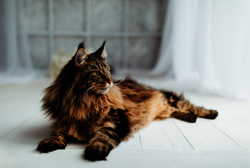
Maine Coon
The breed is one of the largest and most popular cats in the…
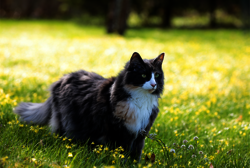
Norwegian Forest Cat
A self-confident cat who is also talkative and sociable
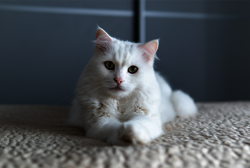
Turkish Angora
The beautiful long hair is the hallmark of this breed
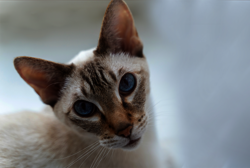
Oriental Shorthair
The Oriental Shorthair evolved from the Siamese cat
